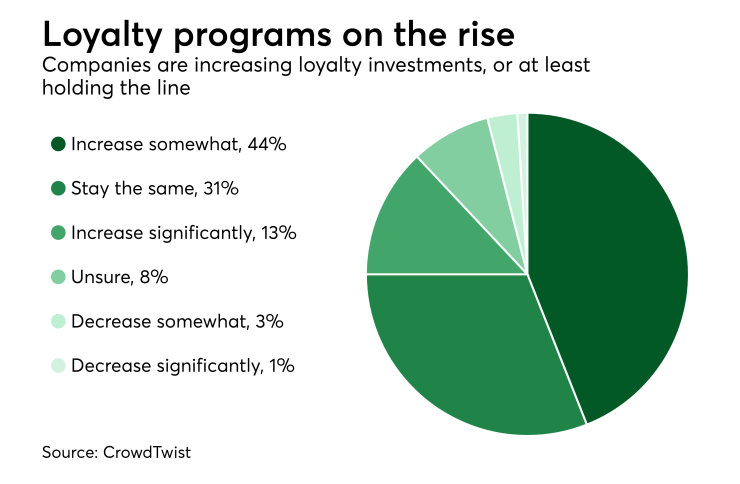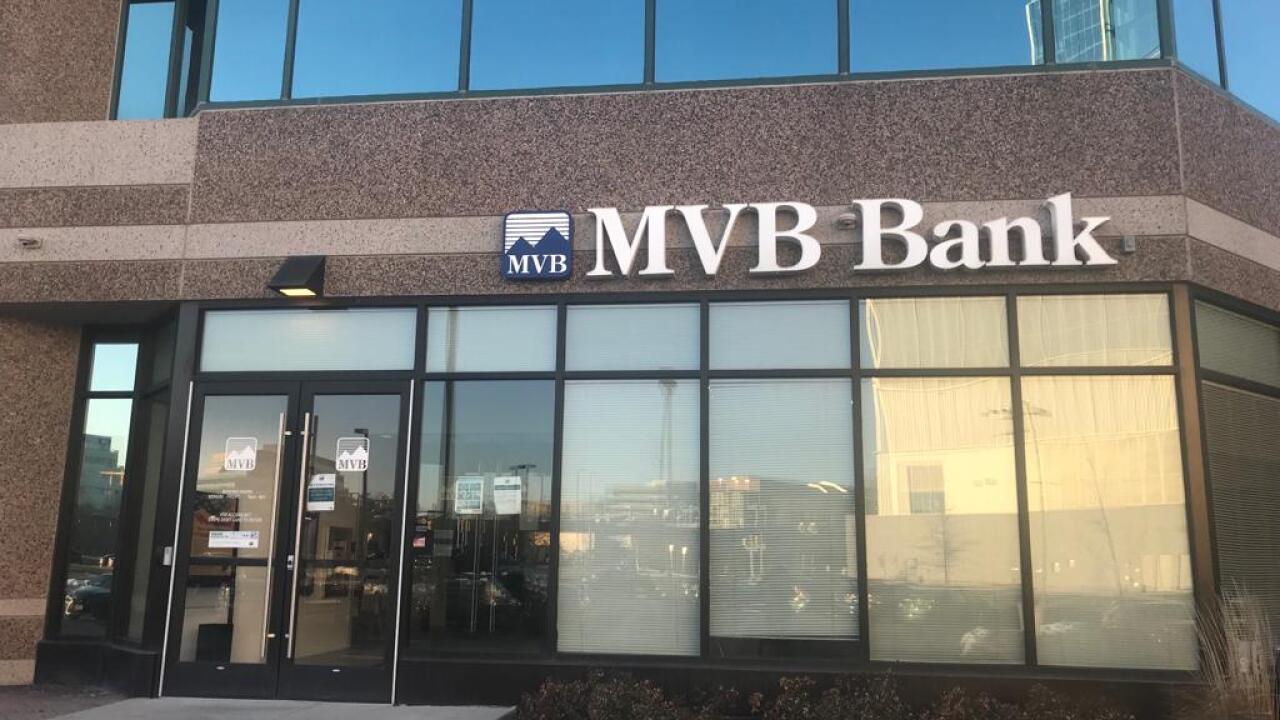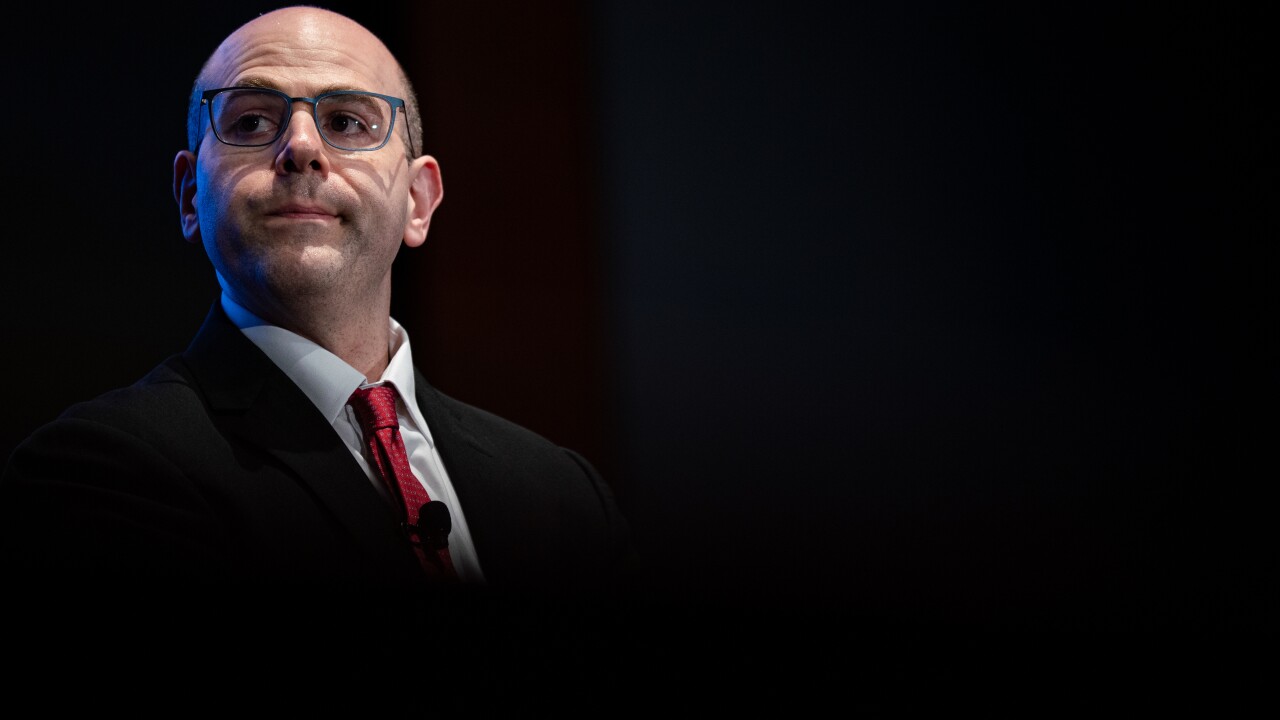Charging what people are willing to pay is an exact science, claims First Insight's Jim Shea, who contends the loyalty programs and price perks that merchants offer aren't always necessary.
"Not all consumers are the same. One may be willing to pay full price, but the other may want 30% off," said Shea, the chief commercial officer of First Insight, a Pittsburgh-based customer data and analytics company, which just added a new client, vineyard vines, a Stamford, Conn.-based clothing retailer.
First Insight uses online social engagement tools to gather product pricing and sentiment data, then feeds that information into predictive models to enable merchants to make decisions such as design, buying and pricing.

One of the concepts it considers is price elasticity, or the price point at which consumers will no longer buy a product. Pricing is obviously a big part of marketing, and it also feeds into merchant-funded reward programs, which are often considered complementary to
Whatever the form, loyalty and rewards have the effect of lowering the price of products. It may not always be necessary to lower prices to the same extent — or at all — to get consumers to buy, according to Shea.
"The retailer doesn't know which one is consumer A, who wants the discount, or consumer B, who doesn't. So they offer the discount across the board," Shea said. "They're sacrificing for a consumer who didn't require the loyalty."
By analyzing how consumers talk on social media or respond to email campaigns and other marketing, retailers can determine which discounts would be most effective for which customers, Shea said.
This analysis can not only inform pricing and discounts, but also serve to improve supply chains and bring more precision to brick-and-mortar merchants that are challenged by Amazon's growing dominance.
"You can collect feedback that can determine what price the market is willing to pay," Shea said. "Retail is at a tipping point, you read stories every week about retailers going bankrupt and closing stores while Amazon grows. Brands are really struggling for relevancy."
There is a risk in the loyalty-reduction strategy, and First Insight is not attempting to get rid of programs, but more to right size them.
"The incentive business has gotten really big," said Michael Moeser, director of payments at Javelin Strategy & Research. "You don't want to incent someone that's going to go to the store anyway."
But there is a potential pitfall to a strategy that looks for opportunities to remove discounts or loyalty programs, according to Moeser, who said in today's market there's almost an expectation of some form of discount, coupon or merchant loyalty program.
"There's a leap of faith that a store owner has to take...customers tend to be fickle," Moeser said.
Vineyard vines did not make an executive available for an interview. In a release, the company did express a desire for improving "full-price" sales.
"We validated the ROI of the First Insight solution through measuring a direct increase in online conversions and full-price sales. Ultimately First Insight is helping us deliver on two of our corporate goals; building great relationships with our customers and driving profitable sales," said Mike Gaumer, president of vineyard vines, in the release.
David's Bridal, one of First Insight's longer-term clients, uses First Insight to reduce merchant funded rewards. The retailer reports it has benefited from the technology's ability to improve speed to market and test new styles.
"I am a huge proponent of mixed-methods analysis, using techniques that provide both quantitative and qualitative information," said Mark Chrystal, senior vice president and chief supply officer of David's Bridal, in an interview.
These methods, including First Insight, help the retailer understand not only what happened, but why it happened, Chrystal said. "Putting this into context, the quantitative data collected through First Insight allows us to understand how customers ranked our products, and the prices they would be willing to pay. Then, the qualitative customer feedback on each style allows us to understand why they were ranked the way they were."
Chrystal said David's Bridal has initiated a project to study price elasticity. "Our Rewards program is squarely part of that study. However, we don't expect to have implementable results until the middle of next year," he said. "As part of this broader study, we have been developing price elasticity models for all of our coupons, promotions and markdown price changes since late last year."





